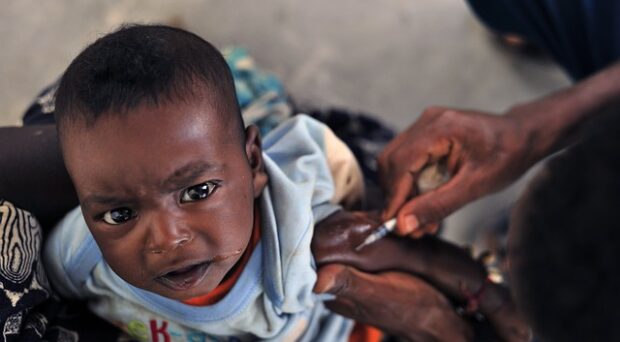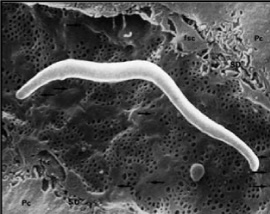
Although the Indomitable Lions suffered an early knock-out from the Afcon football championships, Cameroon has since scored a major goal in public health. The RTS,S vaccine has been celebrated worldwide for becoming the first malaria vaccine to show efficacy and be approved by WHO. After a long journey, the first national roll-out of this pioneering immunisation is beginning soon in Cameroon.

The ongoing scourge of malarial disease has been successfully countered thanks to fighting the parasite’s mosquito vector, preventing bites with insecticide nets, as well as distributing effective therapeutics. For decades there was a notable absence in this arsenal – a vaccine. Indeed, despite many years of research, the causative Plasmodium parasite has proven remarkably resistant to a preventative vaccine. Malariologists have had to get increasingly creative, attempting to target different stages of the parasite life-cycle (including preventing ongoing transmission, as opposed to preventing disease in the recipient), and using substantially different inoculum (from individual proteins to whole inactivated parasite cells).
Many scientists assumed that they would never see a malaria vaccine in their lifetime, and even after RTS,S was conceived (in the early 1990s by GSK) it took around thirty years before major clinical trials and the first national distribution. The inoculation takes aim at the first stage of the Plasmodium falciparum life-cycle, the invasion of the liver by mosquito-secreted sporozoites. The vials contain protein constructs of circumsporozoite protein (CSP) concatenated with hepatitis B virus protein, which then assemble into virus-like particles that are ideal for stimulating an immune response. Incremental refinements and small individual tests eventually grew into major phase III clinical trials and recommendation by WHO.

Although Cameroon is beginning the first national vaccine roll-out, thankfully many children in Africa have already received their boosters from the WHO Malaria Vaccine Implementation Programme. This scheme began as a pilot to test how effective and safe the vaccine was on a scale of mass distribution, and now estimates suggest that nearly 2 million children from Kenya, Malawi, and Ghana have been protected since its launch in 2019. Now other African nations plagued by malaria want in on the action, leading to the ordering of 12 million more doses by WHO, UNICEF, and GAVI.
With a unilateral order of over 600,000 doses, Yaoundé, the captial city of Cameroon, is embarking on its own vaccine program. It is not a surprise that it is taking the threat of malaria seriously; “malaria cases have been rising since 2017 and, currently, 30 percent of all hospital consultations are malaria related”. Additionally, neighbouring Nigeria now hosts the invasive Asian mosquito, and malaria vector, Anopheles stephensi, which presents a grave threat to urban areas in Africa. On January 22nd, the administration of the RTS,S vaccine around the country began. A young baby, Daniella, received the first dose. UNICEF has heralded this moment as a sign “that malaria vaccination is moving out of its pilot phase”.
This exciting milestone is tempered by the limits of the RTS,S vaccination, including an efficacy well below 100% and the difficult regimen of four booster doses required for long-term protection. However there are many reasons to be optimistic of the future – thanks to new developments in the field. Another vaccine, known as R21, is progressing to widespread delivery in addition to RTS,S, hopefully to provide another string to the bow of public health. Further announcements suggest exciting new directions of vaccine development, including Sanaria being able to produce whole sporozoites without needing live mosquitoes, and COVID-19 superstars BioNTech starting trials for an mRNA vaccine against malaria.
Although a small step in the grand scheme of prevention, Cameroon’s actions have demonstrated that the people of Africa are finally, finally, gaining mass access to a malaria vaccine.

Comments